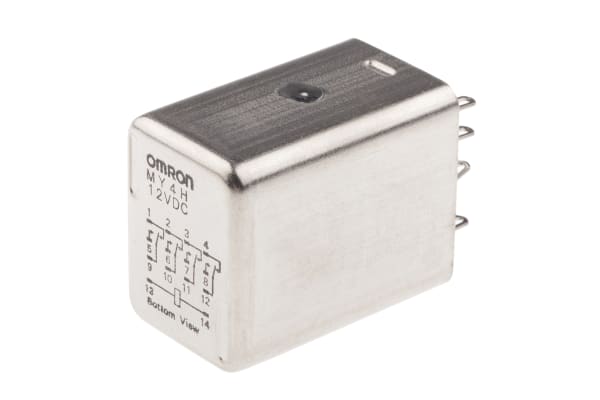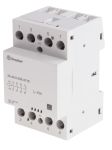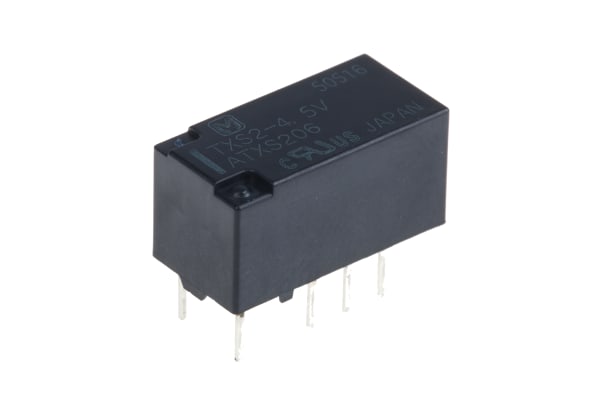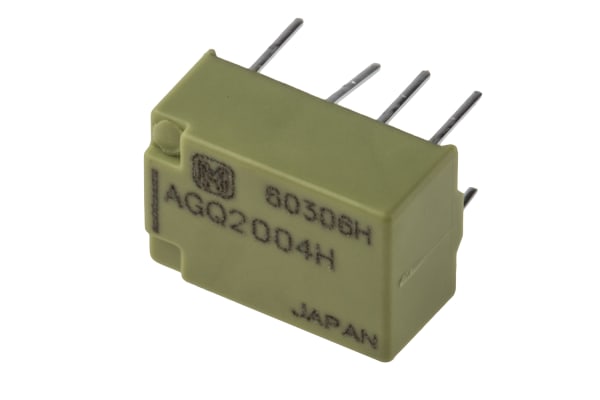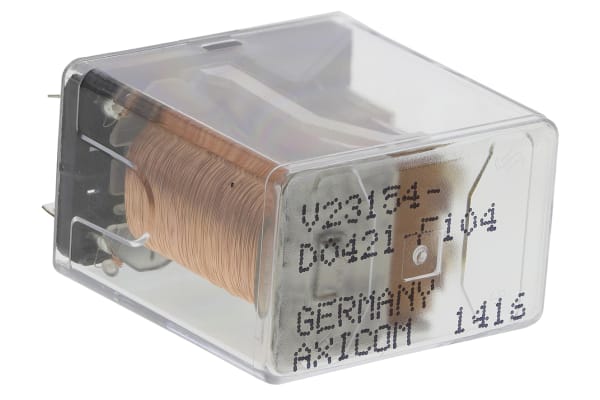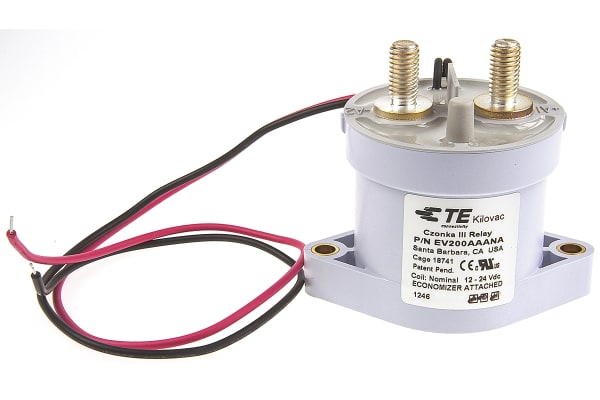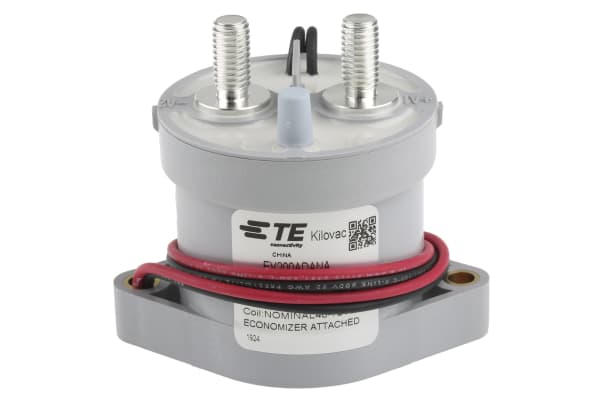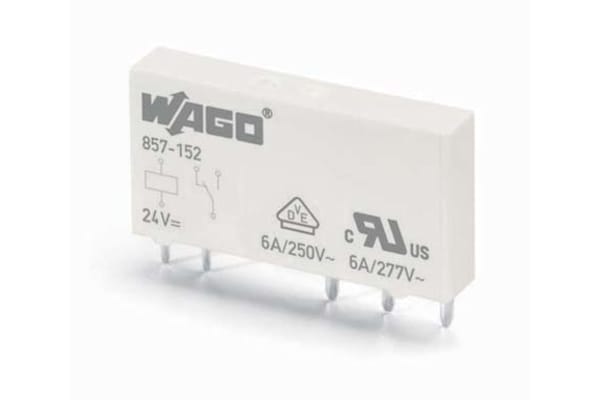Non-Latching Relays
Relays are electrical switches that are operated by electrical impulses with the primary function to open and close a circuit, they can also be referred to as industrial switches. There are 2 main types available, latching and non–latching relays.How do non-latching relays work?Non-latching relays are in a normally closed (NC) position and will stay in this state without power. When power passes through the circuit, the relay switched to a normally open (NO) position by using an internal coil to generate a magnetic force, holding this NO position. Once the current is turned off, it returns to the NC position. This makes non-latching relays well suited to push-button applications like keyboards and micro-controller input buttons.What are non-latching relays used for?Non-latching relays are highly durable and versatile components, making their performance long lasting and suitable for use in a wide range of applications, such as:Automotive enginesHousehold appliancesIndustrial machineryMedical equipmentTelecommunications equipmentWhat is the difference between latching and non-latching relays?Both types of relays in similar in design and function, however, a significant difference between them is that a latching relay will remain in the last position it when it was last powered, whereas a non-latching goes back to its normal position. This makes each more type of relay suitable for different applications. Considerations when selecting a relayWhen choosing a relay, it is important to consider a number of specifications to ensure it is fit for purpose, some factors include:Coil voltage – the required voltage to actuate the switching mechanism. If a voltage is too high this could damage the components, if it is too low then it will not actuate. Contact configuration – This is the state the contacts are in without power. For example SPST, single pole single throw.Contact material – the relay contacts are available in many materials that have certain properties. Common materials are gold, silver, tin oxide and nickel Coil power – the amount of power (watts) the coil operates at. This must match the power in the circuit for correct function. Coil resistance – the amount of resistance (ohms) in the circuit that the coil creates.
-
Finder, 24V ac/dc Coil Non-Latching Relay SPDT, 16A Switching Current DIN Rail Single Pole, 13.01.0.024.0000
IDR1,260,777.80 -
Omron, 12V dc Coil Non-Latching Relay 4PDT, 3A Switching Current Panel Mount, 4 Pole, MY4H-US DC12
IDR1,410,246.05 -
Phoenix Contact, 24V dc Coil Non-Latching Relay DPDT DIN Rail, 2 Pole, 2940391
IDR1,361,052.64 -
Finder, 24 V dc, 24V ac Coil Non-Latching Relay DPDT, 40A Switching Current DIN Rail, 4 Pole, 22.44.0.024.4610
IDR1,110,785.10 -
Finder, 240V ac Coil Non-Latching Relay 3PDT, 40A Switching Current DIN Rail, 4 Pole, 22.44.0.230.4710
IDR1,562,231.66 -
Schneider Electric, 24V dc Coil Non-Latching Relay 4PDT, 3A Switching Current Plug In, 4 Pole, 782XDXH10-24D
IDR2,029,936.17 -
Panasonic, 4.5V dc Coil Non-Latching Relay DPDT, 1A Switching Current PCB Mount, 2 Pole, TXS2-4.5V
IDR1,516,080.06Tube (1 Tube of 40) -
TE Connectivity, 24V dc Coil Non-Latching Relay 4PDT, 2A Switching Current PCB Mount, 4 Pole, V23154D 721B110
IDR1,954,100.70 -
Schneider Electric, 24V dc Coil Non-Latching Octal Relay 3PDT, 12A Switching Current Plug In, 3 Pole, 750XCXH-24D
IDR1,989,238.85 -
Panasonic, 4.5V dc Coil Non-Latching Relay DPDT PCB Mount, 2 Pole, AGQ2004H
IDR1,853,091.63Tube (1 Tube of 50) -
TE Connectivity, 24V dc Coil Non-Latching Relay DPDT, 5A Switching Current PCB Mount, 2 Pole, V23154D 421F104
IDR2,276,742.34 -
Finder, 24 V ac, 24V dc Coil Non-Latching Relay DPDT, 63A Switching Current DIN Rail, 4 Pole, 22.64.0.024.4610
IDR2,301,601.27 -
TE Connectivity, 24V dc Coil Non-Latching Relay 4PDT, 2A Switching Current PCB Mount, 4 Pole, V23154D 421B110
IDR2,320,586.36 -
TE Connectivity, 12V dc Coil Non-Latching Relay DPDT, 5A Switching Current PCB Mount, 2 Pole, V23079A1003B301
IDR2,501,102.05Tube (1 Tube of 50) -
Phoenix Contact, 24V dc Coil Non-Latching Relay 5PNO, DPST, 2963747
IDR2,597,495.96 -
Panasonic, 24V dc Coil Automotive Relay SPDT, 40A Switching Current PCB Mount Single Pole, CB1-M-24V
IDR4,506,703.74Box (1 Box of 50) -
Panasonic, 4.5V dc Coil Non-Latching Relay DPDT, 1A Switching Current PCB Mount, 2 Pole, AGN2004H
IDR4,000,189.93Tube (1 Tube of 50) -
TE Connectivity, 9 → 36V dc Coil Automotive Relay SPNO, 500A Switching Current Flange Mount Single Pole,
IDR2,846,924.38 -
TE Connectivity, 32 → 95V dc Coil Automotive Relay, 500A Switching Current Panel Mount Single Pole, EV200ADANA
IDR3,472,698.12 -
Wago, 24V dc Coil Non-Latching Relay, 6A Switching Current DIN Rail Single Pole, 857-152
IDR3,841,596.25Box (1 Box of 20) -
Panasonic, 24V dc Coil Non-Latching Relay DPDT PCB Mount, 2 Pole, JW2SN-DC24V
IDR5,139,610.00Box (1 Box of 100) -
TE Connectivity, 24V dc Coil Non-Latching Relay SPNO, 8A Switching Current PCB Mount Single Pole, OJ-SH-124LMH
IDR7,580,400.30Bag (1 Bag of 500)




